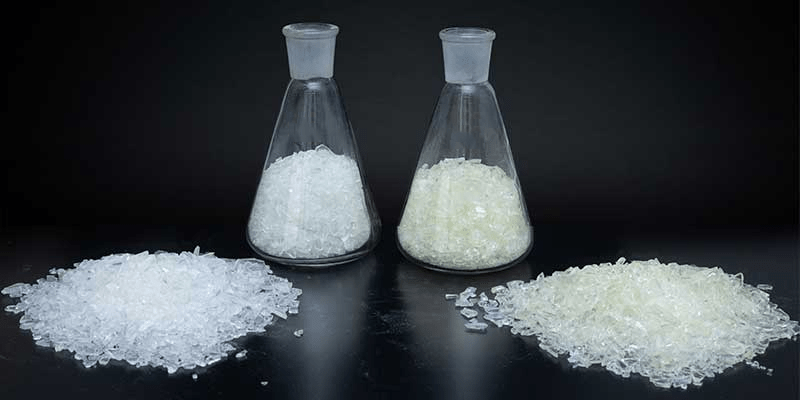In the ever-evolving world of materials science and industrial manufacturing, polyester resins have played a crucial role across diverse applications — from automotive parts to coatings, and from construction to electronics. Among them, saturated and unsaturated polyester resins are the two main categories, each with distinct properties, uses, and processing methods. Understanding the differences between these resins is essential for manufacturers, engineers, and product developers.

What Are Polyester Resins?
Polyester resins are synthetic resins formed by the reaction of polyhydric alcohols with polybasic acids. They are known for their versatility, cost-effectiveness, and wide range of applications. Based on the chemical structure and degree of unsaturation in the polymer chain, polyester resins are broadly classified into saturated and unsaturated types.
Saturated Polyester Resin
Saturated polyester resins are polymers with no carbon-carbon double bonds in their backbone. This structural feature gives them a non-reactive nature, making them unsuitable for crosslinking without the use of external hardeners or curing agents.
Key Characteristics:
- Excellent chemical and UV resistance
- High mechanical strength and flexibility
- Superior heat resistance
- Good surface finish and gloss retention
Common Applications:
- Powder coatings
- Automotive paints
- Coil coatings
- Adhesives and flexible packaging films
Due to their resistance to yellowing and environmental degradation, saturated polyester resins are widely used in durable coating systems and high-performance industrial applications.
Unsaturated Polyester Resin (UPR)
In contrast, unsaturated polyester resins contain double bonds in their backbone, allowing them to undergo crosslinking through free-radical polymerization when combined with a curing agent (usually a peroxide initiator).
Key Characteristics:
- Thermosetting nature — forms a hard, rigid structure after curing
- Easy to mold and shape before curing
- Excellent adhesion to glass fibers
- Relatively low cost
Common Applications:
- Fiberglass-reinforced plastics (FRP)
- Boat hulls, tanks, and pipes
- Construction panels
- Artificial marble and bathroom fixtures
UPRs are extensively used in composite materials and construction due to their ease of processing and high strength-to-weight ratio.
Key Differences at a Glance
| Feature | Saturated Polyester Resin | Unsaturated Polyester Resin |
|---|---|---|
| Chemical Bonds | No double bonds | Contains double bonds |
| Curing | Requires external curing | Self-curing via crosslinking |
| Thermoplastic or Thermoset | Typically thermoplastic | Thermosetting |
| Flexibility | More flexible | More brittle after curing |
| Applications | Coatings, adhesives, films | FRP, construction, marine |
Industry Impact and Market Trends
The global market demand for both types of polyester resins is growing, driven by rising infrastructure needs, the automotive industry, and sustainable packaging trends. Innovations in bio-based saturated polyesters are offering greener alternatives, while enhancements in unsaturated resins aim to improve fire resistance and reduce VOC emissions.
Conclusion
While both saturated and unsaturated polyester resins belong to the same polymer family, their differences in molecular structure define their unique properties and applications. Understanding these differences is vital for choosing the right material for the right application — whether for creating a corrosion-resistant coating or manufacturing a durable fiberglass tank.
As technology continues to evolve, so too will the performance capabilities of these resins, making them indispensable materials for the industries of tomorrow.
